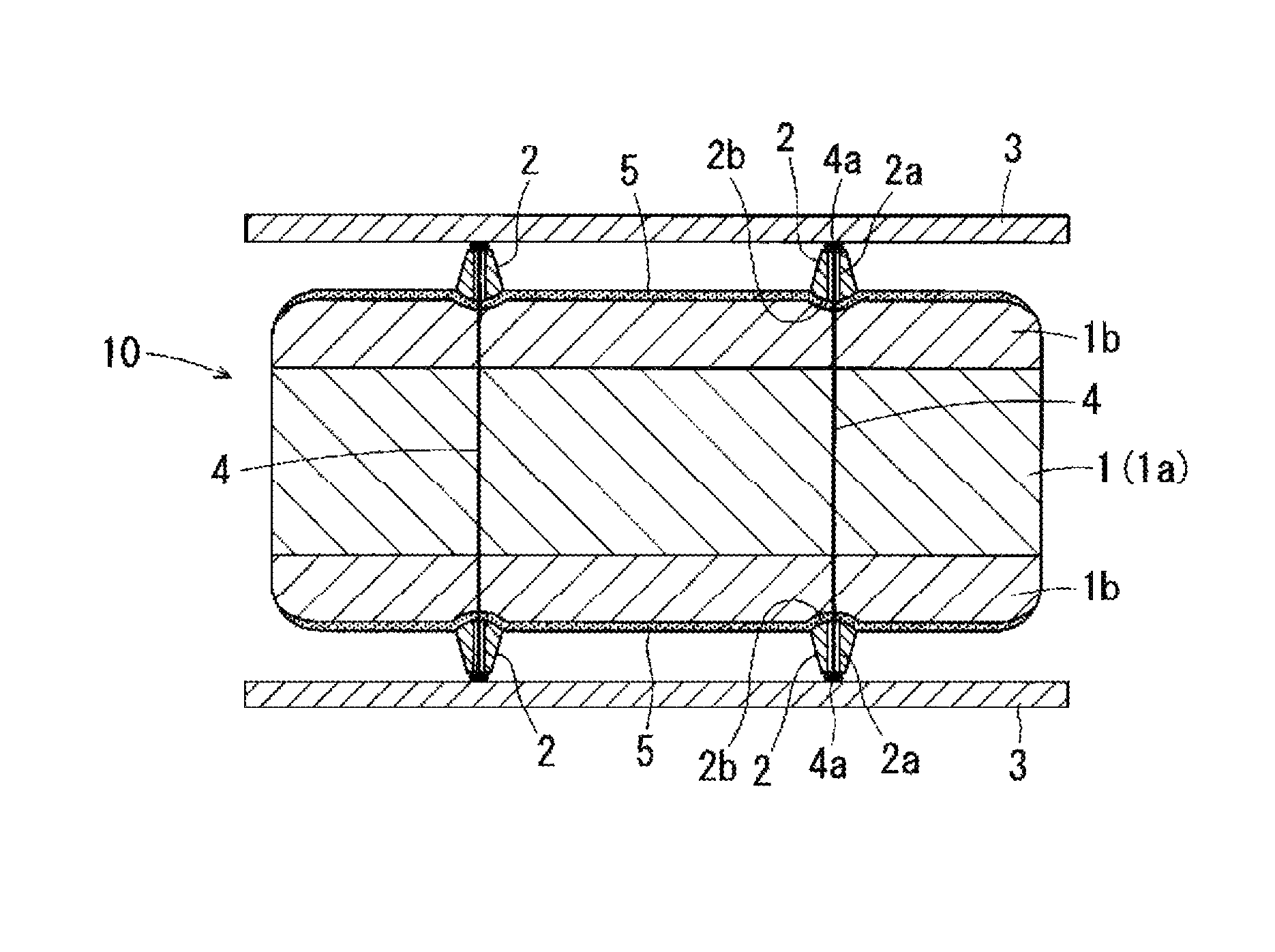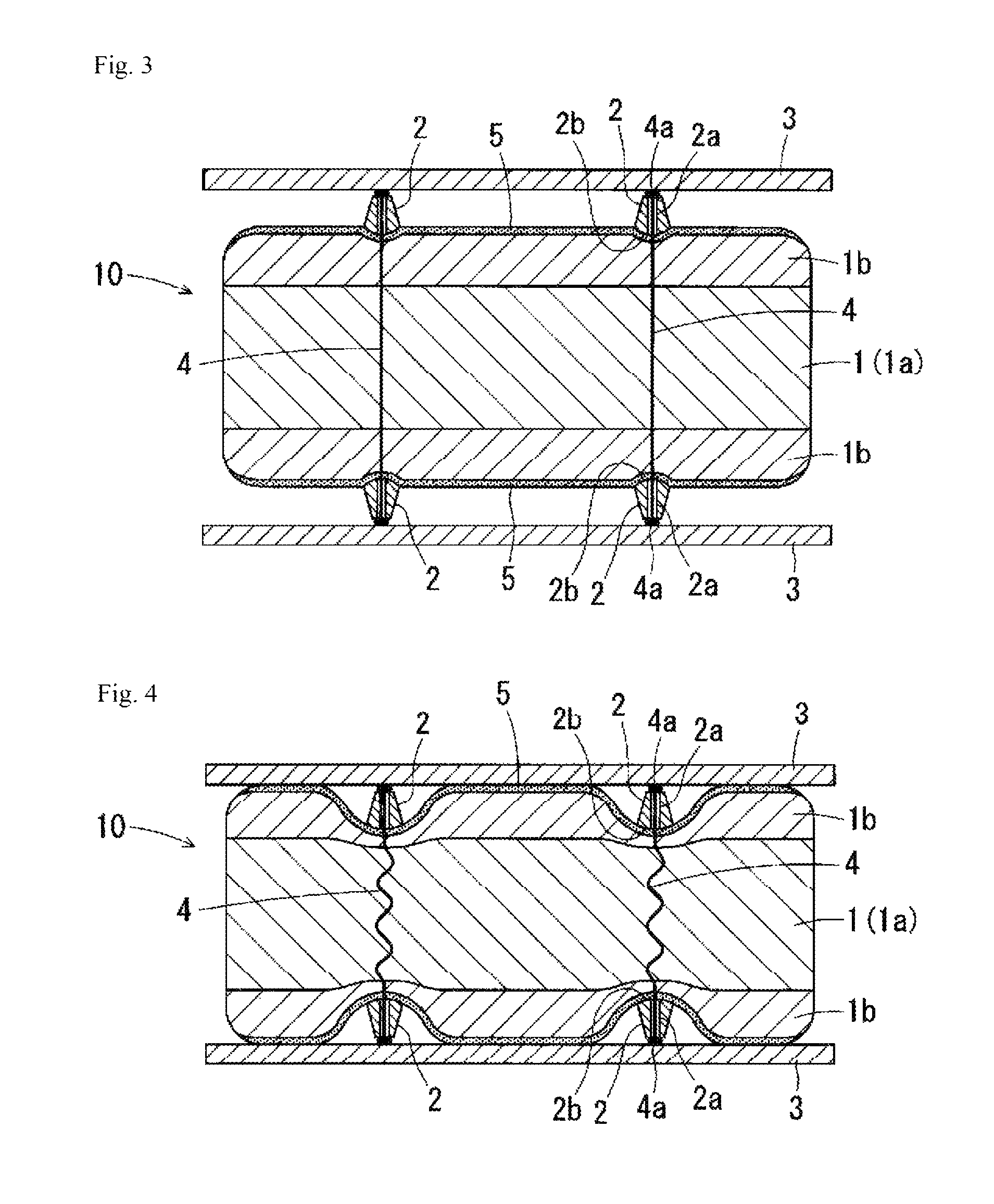Stand-alone biomimetic artificial intervertebral disc system
a technology of artificial discs and stands, applied in the field of stand-alone biomimetic artificial disc systems, can solve the problems of increasing the risk of necrosis or damage, affecting the stability of mounting, and affecting the stability of the mounting, so as to eliminate the risk of necrotizing or causing damage to adjacent intervertebral discs, excellent bone bonding, and excellent bone bonding
- Summary
- Abstract
- Description
- Claims
- Application Information
AI Technical Summary
Benefits of technology
Problems solved by technology
Method used
Image
Examples
Embodiment Construction
[0039]Hereafter, a specific embodiment of the present invention is described in detail with reference to drawings.
[0040]A stand-alone type of biomimetic artificial intervertebral disc 10 shown in FIG. 1 and FIG. 2, is a total substitution type of artificial intervertebral disc to be inserted and fixed between upper and lower vertebral bodies 20 and 20 of the cervical spine, thoracic spine or lumbar spine as shown in FIG. 5, and has a configuration, which is very much similar to a biological intervertebral disc having a planar shape whose front half is a semicircle and rear half is a rectangle, and is composed of a structured fabric 1 of organic fibers formed to be bulk and tappets 2 arranged at positions facing from each other on an upper surface and a lower surface of this structured fabric 1, respectively. The size of this artificial intervertebral disc 10 varies depending upon a human body size, and the size also varies between those for adults and children, and depending upon th...
PUM
| Property | Measurement | Unit |
|---|---|---|
| height | aaaaa | aaaaa |
| height | aaaaa | aaaaa |
| length | aaaaa | aaaaa |
Abstract
Description
Claims
Application Information
 Login to View More
Login to View More - R&D
- Intellectual Property
- Life Sciences
- Materials
- Tech Scout
- Unparalleled Data Quality
- Higher Quality Content
- 60% Fewer Hallucinations
Browse by: Latest US Patents, China's latest patents, Technical Efficacy Thesaurus, Application Domain, Technology Topic, Popular Technical Reports.
© 2025 PatSnap. All rights reserved.Legal|Privacy policy|Modern Slavery Act Transparency Statement|Sitemap|About US| Contact US: help@patsnap.com



